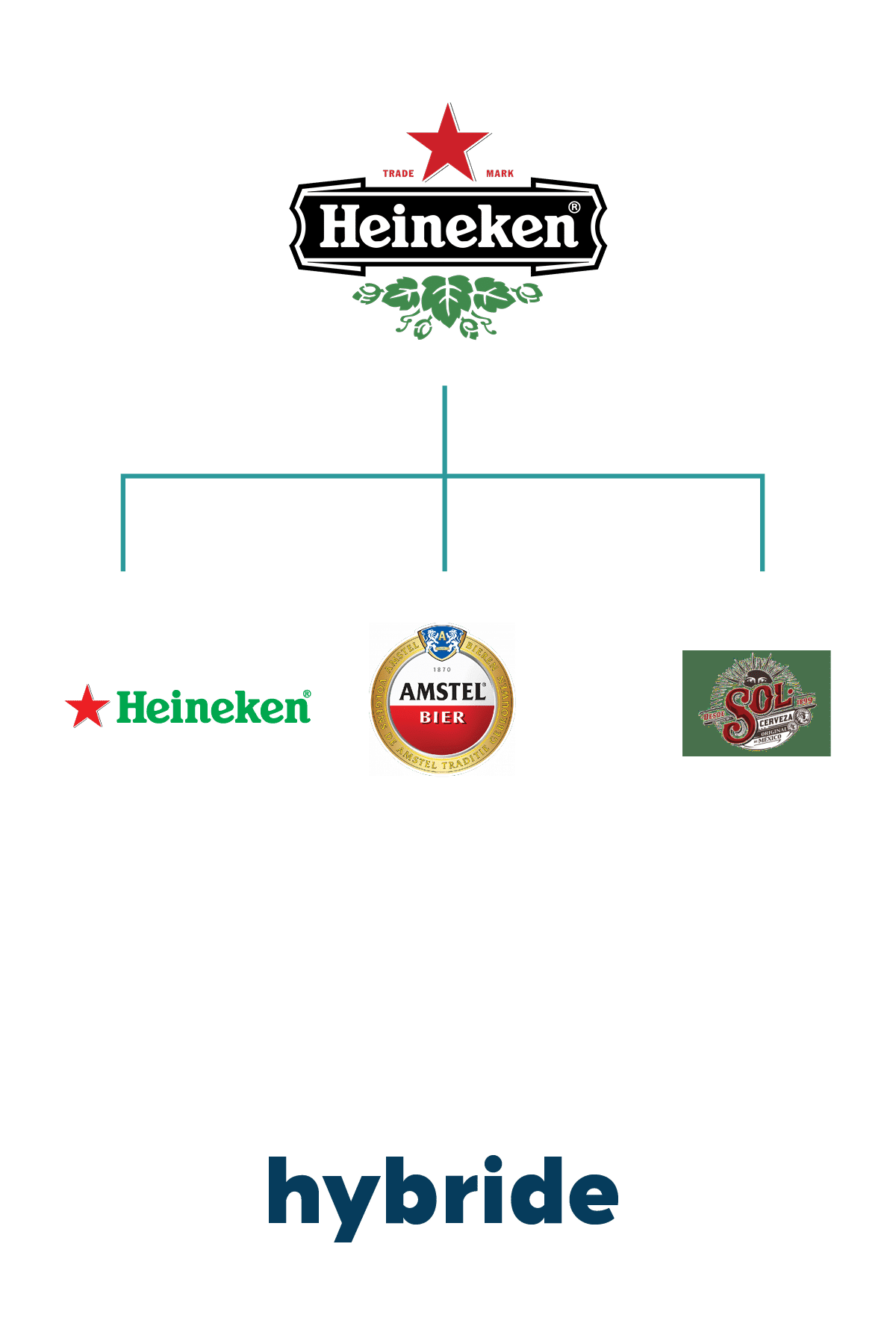*Positioning
Brand strategy in acquisition: maintaining a second brand or integrating quickly?

Is it better to serve the market under one brand? This brand strategy often seems like the most logical solution in an acquisition because it is cost-efficient and the acquiring party prefers its own brand. A student posed this question to us on behalf of her graduate company, and in this article, we will delve deeper into our thinking and approach. At the end of the article, we will discuss concretely how we think about the various possibilities such as a hybrid brand architecture or an endorsed brand. What is your ideal brand strategy in an acquisition?
Brand strategy in acquisition
From her graduate research, a student contacted Merkelijkheid with an interesting question regarding brand strategy in acquisition:
“The company where I am interning recently acquired a company that broadens its service offerings in the same market. There are clear opportunities, the market in which we operate is developing, and the additional services allow us to serve our customers even more broadly. They are wondering: How can we position these companies as one brand in the market?
But first, I wonder if one brand is the right choice or if there are other possibilities (brand structures)?”
This smart student has been given a clear question but prefers to take a step back first. Before she starts positioning one brand, she wants to determine which brand structure best fits this organization.
What do I do with an acquired brand?

The real work begins once the contracts are signed
In practice, we often encounter this issue. Some entrepreneurs immediately put their brand on the facade of the acquired company, but most take more time for this. There are many concerns and interests at play, such as:
- Will we lose any goodwill if we let go of the old brand?
- What do the employees – our new colleagues – think about it?
- What do customers think about it?
- Can two independent brands differentiate themselves better?
If you make this decision based on feelings or practical considerations alone, you run the risk of not extracting the full value from your acquisition. But how do you make an informed decision?
Strategic Framework
As positioning specialists, we naturally approach this issue very differently from the entrepreneur. We understand the possibilities of positioning and marketing, but know much less about the market and the organizations involved. The entrepreneur sees an opportunity and we have experience with similar challenges, companies, or markets. By bringing this together, we arrive at unique insights and make the right decision together.
Creating a shared strategic framework is central to our methodology. This refers to the process by which we ensure that everyone involved in the decision-making process (e.g. entrepreneur, management team, advisors) has the same information and knowledge and adheres to the same principles.
What does this mean in practice? A shared strategic framework ensures, for example, that everyone looks at the playing field (the market) in the same way. To do this, you need to answer questions such as; what determines distinctive capacity in our market, how are our competitors positioned, how are we positioned ourselves, where are the opportunities and why? In addition, we always pay attention to:
- Business economic factors and considerations
- Product or service
- Marketing maturity of organization(s)
- Culture and identity
- Target group Customers

A useful tool in the strategic framework is the positioning matrix in which we compare the key players in a market.
With the strategic framework in hand, we can look ahead and make decisions. Where is the market heading? What does our target audience need and where are the opportunities? Based on the answers to these questions (in combination with the strategic framework), it becomes clear which brand structure or brand architecture your company needs to achieve its goals.
If you have a specific question about positioning, brand architecture, or brand structure, we would be happy to help you think freely about it. Our questions will certainly help you and you will gain inspiration and energy from our conversation. To do this, schedule a (video) appointment.
Brand structure and brand architecture in acquisitions
But of course, you’re reading this article because you’re looking for answers. Like the student who asked us this question, you want to know what to do. That’s why we’re sharing some considerations and thoughts on this topic.
Brand strategy: When should I merge two brands?
For example, we choose to merge brands when one brand is clearly stronger than the other. By looking at factors such as name recognition, spontaneous requests, and domain authority, we determine which brand is preferred. Then choose a clear approach with an organized plan for how the new brand will also appear on the other facade. This prevents resistance or frustration in the acquired organization.

All GE activities are gathered under one brand
Indeed, merging brands can also be driven by cost considerations, even if both brands have a strong and distinct positioning. Consolidating brands can help achieve cost savings, especially when there are budget constraints that limit marketing efforts. Focusing all efforts on one brand allows for more efficient use of resources and can help maximize the impact of marketing efforts.
Brand Strategy: When to Launch Two Brands in the Market?

Heineken uses a hybrid brand architecture.
A good reason to launch two separate brands in the market is the customer or target audience. If two established brands, for example, have a unique proposition that appeals to a specific target audience, there may be little to gain from a single brand. Choosing between two target audiences can sometimes be a waste.
But if you choose to maintain two brands, you can always consider a hybrid brand architecture or endorsed brand. Your original brand takes a prominent position and you can use its brand value to further load your new brand.
If you have a view on more acquisitions (within a few years), then your brand strategy becomes even more important. Will your original brand become the strong group brand that connects all new brands, will you now work hard to build the brand value of one brand so that all new companies will benefit from it, or will you build individual strong brands with a completely unique proposition that appeals to a completely different target audience? We have seen good examples of all these possibilities and would be happy to think along with you about which one suits your company best.
Positioning in case of an acquisition
The positioning of a brand is becoming increasingly important, even in B2B. Brands with a unique and distinctive positioning attract employees more easily, get a seat at the table more quickly, and can command higher margins. Therefore, it is essential to assess the position of both the new and the old brand before and during an acquisition, to make well-considered decisions regarding brand architecture and brand structure.
At Merkelijkheid, we approach positioning in a unique way. Together with decision-makers, we build a strategic framework, consider the possibilities, and bring the necessary creativity to achieve a distinctive positioning and market approach. Would you like to know what this looks like in practice? Contact us.